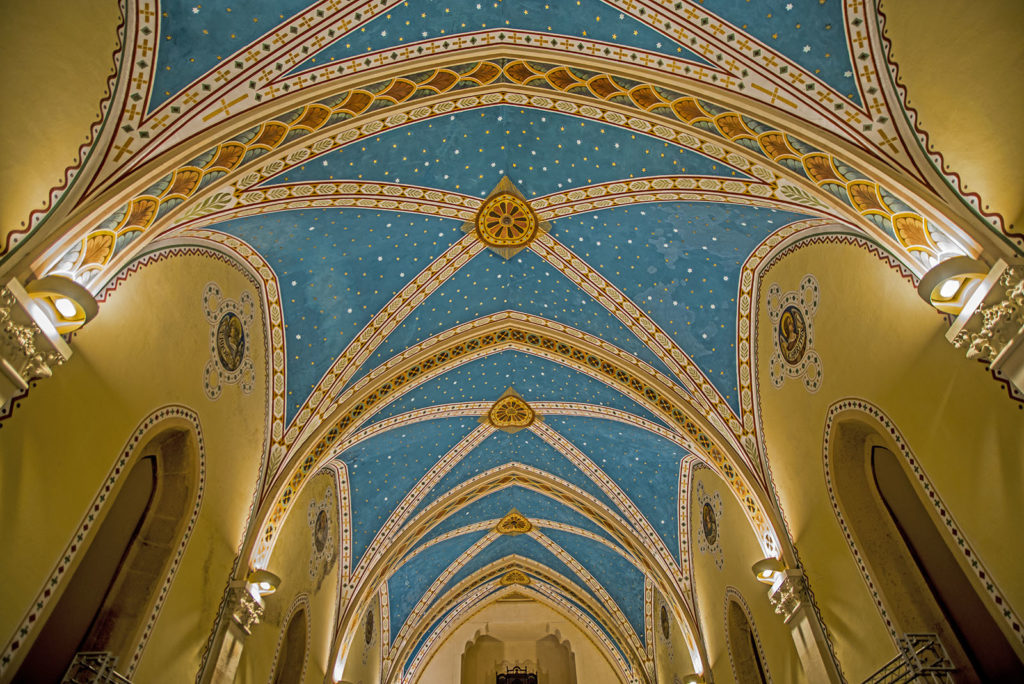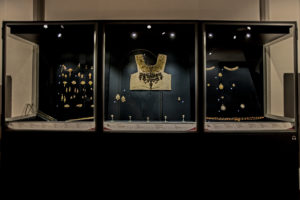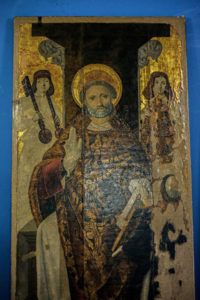The chapel was designed in neo-Gothic style by the Milanese engineer Ambrogio Molla and inaugurated in 1933 by Bishop Giovanni Bargiggia.

It is introduced by a staircase with a
narthex
bordered by three arcades. In antiquity, the space was reserved for those beginning the journey of faith for baptism. The rectangular hall is defined by a single nave that ends with an apse which depicts, inside a pure gold form, Christ showing his heart accompanied by the Angels and the Holy Spirit in the form of a dove.

 The protagonists of the scene are depicted in extremely bright colours that stand out from a very intense blue background.
The protagonists of the scene are depicted in extremely bright colours that stand out from a very intense blue background.
Just below the scene, there are stained glass windows with images of the Virgin Mary, St. Joseph and St. Charles Borromeo, the patron saint of seminarians, created by the artist Albertella, a painter, master glass-maker and mosaicist. Along the nave, characterised by a strong Gothic vertical thrust, there are figures of half-bust angels accompanied by scrolls containing advice and virtues to become a priest. The altar balustrades are by the carpenter Giuseppe Vaccaro.
This room maintains a strong symbolic and spiritual value, since it represents the place of passage between public and ecclesiastical life where, over the centuries, clerics and seminarians have followed their vocation.